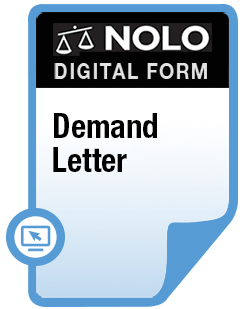It's crucial for injured patients to understand and comply with California's statute of limitations for medical malpractice lawsuits.
California's statute of limitations for medical malpractice cases sets a deadline on an injured patient's right to file a lawsuit over harm caused by a doctor's (or other health care provider's) mistake. This law usually allows one year to get the lawsuit filed once the patient's injury is discovered, or three years from the date of the injury, whichever happens first.
Let's take a closer look at the statute of limitations for medical malpractice in California, including situations that might extend the deadline.
- California's Medical Malpractice Statute of Limitations
- Medical Malpractice Lawsuits Over "Foreign Objects" in California
- California's Medical Malpractice Statute of Limitations for Child Patients
- How Does the "Intent to File" Notice Affect the Medical Malpractice Statute of Limitations?
- More Information and Help With California Medical Malpractice Cases
California's Medical Malpractice Statute of Limitations
A "statute of limitations" is a law that sets a time limit on your right to file a lawsuit. Different kinds of cases have different deadlines, and, in most states, medical malpractice cases have their own specific statute of limitations.
California's statute of limitations for medical malpractice lawsuits, which can be found at California Code of Civil Procedure section 340.5, says that this kind of case must be brought "within one year after the plaintiff discovers, or through the use of reasonable diligence should have discovered, the injury," or within three years of the date of the injury, whichever comes first.
In other words, in California, once you learn that you were harmed by a health care provider's negligence, you need to get your lawsuit filed in the state's civil court system within a year of that discovery. And if you don't discover that you were harmed until after more than three years after the health care provider's negligent act, you will have lost your right to file a medical malpractice lawsuit in California.
It's important to note that if you try to file a lawsuit after the statutory time limit has passed, the court will almost certainly refuse to hear the case, and it will be dismissed. If that happens, you'll have lost your right to take any legal action against the health care provider who harmed you, no matter how clear the medical mistake was, or how badly you were hurt.
Medical Malpractice Lawsuits Over "Foreign Objects" in California
One exception to California's overall three-year deadline is cases where a foreign object—such as a medical instrument or a surgical sponge—was left in the patient's body. In those kinds of cases, the one-year discovery deadline still applies, but there is no overall time limit. So you could bring this kind of case ten years or more after the surgical error occurred, as long as you file it within a year after you find out about the presence of the foreign object.
California's Medical Malpractice Statute of Limitations for Child Patients
Another exception is when the plaintiff is younger than six years old. Even if more than three years have passed since the injury, the medical malpractice lawsuit may be filed as long as it's brought to court before the child's eighth birthday.
How Does the "Intent to File" Notice Affect the Medical Malpractice Statute of Limitations?
It's important to take note of one more procedural hoop that California medical malpractice plaintiffs must jump through: California Code of Civil Procedure section 364 entitles the defendant healthcare provider to at least 90 days' notice of a patient's intent to file a medical malpractice lawsuit. If the plaintiff provides that notice within 90 days before the statute of limitations runs out, the deadline will be extended for 90 days from when the notice was served on the defendant.
More Information and Help With California Medical Malpractice Cases
It's crucial to understand California's statute of limitations if you're thinking about suing a doctor or other health care provider. It will also help to get familiar with other key state laws, like California's cap on damages in medical malpractice cases.
If you're convinced you have a valid medical malpractice case against a California health care professional, your best first step might be discussing your situation (and your options) with an experienced legal professional. These kinds of cases are tough to prove, and tougher to win, since doctors and their insurance companies tend to dig in and fight. A lawyer can help you decide whether it's worth it to file a medical malpractice lawsuit. Learn more about the difference a medical malpractice lawyer can make.
- California's Medical Malpractice Statute of Limitations
- Medical Malpractice Lawsuits Over "Foreign Objects" in California
- California's Medical Malpractice Statute of Limitations for Child Patients
- How Does the "Intent to File" Notice Affect the Medical Malpractice Statute of Limitations?
- More Information and Help With California Medical Malpractice Cases


